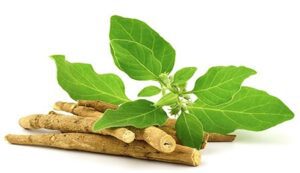Success Story: This woman left traditional farming and started farming Ashwagandha with her husband, now earning well every month
Success Story: Madhya Pradesh’s Khandwa district is now well-known for its medicinal cultivation in addition to its conventional crops. By growing medicinal crops like ashwagandha alongside their husbands, some tribal women in this area are not only making millions of dollars, but they have also inspired the whole community. With their perseverance and hard work, these women are taking a new path that has not only raised their quality of living but also served as a powerful example of women’s empowerment for the whole society.

Started growing medicinal crops
Kala Bamne, Pushpa Koge, Saraswati Patil, Manju Didi, Anita Didi, Kalpana Didi, Rukmini Didi, and Asha Didi are some of the well-known women from Khandwa’s Khalwa development block. They shifted to growing medicinal crops instead of the usual crops of wheat, pigeon peas, gram, and oilseeds. When they were trained by Krishi Vigyan Kendra and Namami Ajeevika Mission, their interest in ashwagandha cultivation was particularly piqued.
According to these ladies, conventional crops used to just provide them with subsistence income, but medicinal crops like ashwagandha have helped them become economically independent. They began growing ashwagandha on one acre apiece, and their first year’s yield exceeded their expectations. They are currently growing its cultivation on a massive scale in addition to feeling more confident as a result of this.
What makes ashwagandha unique?
In Ayurveda, ashwagandha is regarded as a vital medication. Numerous medications and dietary supplements include its roots. It is used to boost immunity and address issues including stress, sleep deprivation, and exhaustion. This explains the high demand for ashwagandha both domestically and internationally.
This crop produces a fair amount, particularly when it receives little irrigation. It is regarded as a crop that can withstand drought. The cost is also decreased since it uses less fertilizer and pesticides. Compared to conventional farming, Anita and her colleagues are making a lot more money—roughly Rs 35,000 per quintal of ashwagandha root.
Women’s success
Social transformation and the empowerment of women The success of these women is a symbol of a social revolution for the whole society, not just for themselves. Male farmers in neighboring villages are increasingly becoming interested in ashwagandha and other therapeutic crops after seeing these women’s success. In addition to farming, women are also teaching and mentoring other women.
Special subsidy on medicinal crops
Government assistance is required. These ladies want this kind of farming to be encouraged more by the government. More farmers will be reached by this program if the government implements a plan that includes specific subsidies, seed availability, marketing support, and market linkage for therapeutic crops. Additionally, the state’s economy will gain a new dimension as a result of medicinal cultivation. These ladies from Khandwa are demonstrating today that everything is possible if one has a strong will and the correct direction. Their lifestyle and the appearance of their fields have both transformed as a result of ashwagandha cultivation. Today, these women work for themselves, are independent, and serve as role models for others.

